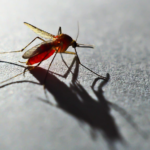Experts have answers for you about avian flu and how it could become a problem for humans.
Four years ago, as attention locked onto COVID-19, another virus began circling the globe. A major outbreak of a new strain of bird flu—formally named Influenza A virus subtype H5N1—has since killed millions of wild birds and infected poultry, dairy cattle, domestic cats, and a small number of humans.
In the United States, four people have contracted the virus. The most recently confirmed case, a dairy worker in Michigan, was the first to experience flu-like respiratory symptoms. For now, federal health officials have deemed the virus a low risk to public health, while launching new studies and monitoring the virus’s spread.
But what exactly are public health officials looking for? How is this virus different from previous H5N1 outbreaks? And how can a bird flu become humanity’s problem, anyway?
University of Washington experts Peter Rabinowitz, a professor of environmental and occupational health sciences and of family medicine, and Julianne Meisner, an assistant professor of epidemiology and of global health, have some answers. They are director and deputy director, respectively, of UW’s Center for One Health Research, which studies the connections between the health of people, animals and our shared environment.
Here, they dig into the questions surrounding avian flu:
Source: University of Washington
Author Profile
- "Center" Bias Rating
- Futurity is a nonprofit website that aggregates news articles about scientific research conducted at prominent universities in the United States, the United Kingdom, Canada, Europe, Asia, and Australia. It is hosted and edited by the University of Rochester.
Latest entries
 ScienceOctober 6, 2024Are you too old for braces?
ScienceOctober 6, 2024Are you too old for braces? ScienceOctober 6, 2024New drug fights tough malaria parasites
ScienceOctober 6, 2024New drug fights tough malaria parasites ScienceOctober 4, 2024Age-related blindness clues may pave way for new treatments
ScienceOctober 4, 2024Age-related blindness clues may pave way for new treatments ScienceOctober 4, 2024Bias toward wealth may take root in toddlers
ScienceOctober 4, 2024Bias toward wealth may take root in toddlers

